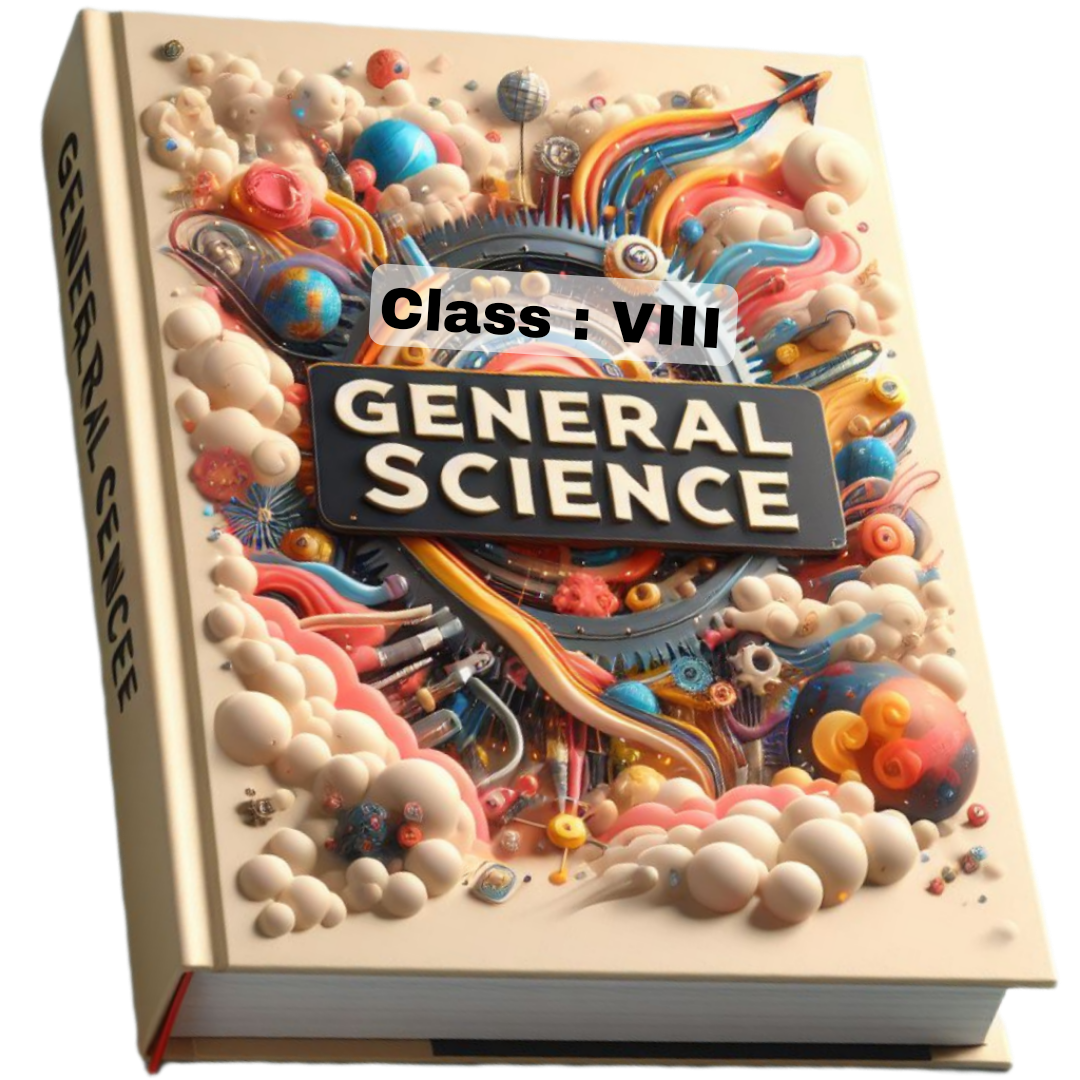Answer the following questions within 500 words each: 10x5=50
1. Discuss Phase IV (1948-1970) and Phase V (1971-1980) of the evolution of public administration as a discipline. (5+5=10)
Answer :
Introduction :
The evolution of Public Administration as an academic discipline is often categorized into distinct phases, each representing a fundamental shift in its intellectual focus and self-conception. Phase IV (1948-1970) and Phase V (1971-1980) mark a critical period where the field transitioned from a confident, scientific pursuit to one embroiled in an identity crisis, ultimately seeking renewed relevance through a focus on values and social equity.
Phase IV (1948-1970):
Public Administration as Political Science—
This phase is characterized by a serious challenge to the orthodoxies of the Politics-Administration Dichotomy, which was a cornerstone of earlier phases. The key theme was that public administration could not be a value-neutral science separate from the political process.
1. The Crisis of Identity:
The publication of Robert Dahl’s essay "The Science of Public Administration:
Three Problems" (1947) and Dwight Waldo’s The Administrative State (1948) served as the catalyst for this phase. They argued that the goal of a value-free science of administration was unattainable because:
· Administration is inherently infused with value judgments.
· The cultural and sociological context of a society shapes its administrative structures.
· The human elements of administration (e.g., personality, culture) cannot be ignored in favour of rigid scientific principles.
2. Integration with Political Science:
In response to this critique, the discipline largely retreated from its independent, prescriptive stance and became a sub-field of Political Science. The focus shifted from establishing universal principles of administration to describing and analyzing the administrative process as a political phenomenon. Research began to focus on public policy analysis, the role of administrative agencies in the policy process, and the power of bureaucrats.
3. Key Characteristics:
· Rejection of the Dichotomy:
It was widely accepted that administrators play a active role in policy formulation, not just execution.
· Comparative Administration:
The Comparative Administration Group (CAG), funded by the Ford Foundation, sought to develop a cross-cultural understanding of administrative systems, particularly in developing nations. This highlighted the inadequacy of a "one-size-fits-all" model.
· Focus on Description over Prescription:
The field became more analytical and less concerned with recommending "one best way" to organize.
This phase left the discipline fragmented and less self-assured, having lost its original conceptual anchor (the dichotomy) without finding a new one.
Phase V (1971-1980):
Public Administration as Management
Dissatisfaction with the field's position as a mere appendage of Political Science led to a new search for identity. Phase V saw a revival of managerial techniques but with a powerful new emphasis on social relevance.
1. The Minnowbrook Perspective (1968):
The pivotal event for this phase was the Minnowbrook Conference in 1968, organized by Dwight Waldo and attended by young scholars. They were deeply influenced by the social turmoil of the 1960s (Civil Rights Movement, Vietnam War) and argued that public administration had become irrelevant to the pressing problems of society.
2. Emergence of New Public Administration (NPA):
The Minnowbrook proceedings gave birth to the NPA movement. Its core tenets were a direct rejection of the value-neutral, descriptive stance of Phase IV:
· Relevance:
Administration must be actively engaged in solving social problems.
· Values:
Social equity, alongside efficiency and economy, must be a central, normative value guiding administrative action.
· Change:
Administrators should be advocates for social change and clients' needs, not just neutral cogs in a machine.
· Client Focus:
A renewed emphasis on responsiveness to citizens, particularly the marginalized.
3. Key Characteristics:
· Normative Advocacy:
NPA was unapologetically normative and proactive, urging administrators to be champions for fairness and justice.
· Managerialism Meets Morality:
While the phase is termed "Public Administration as Management," it was management with a conscience. It adopted techniques like Program Planning Budgeting System (PPBS) but directed them toward socially equitable ends.
· Themes of Adaptation and Humanism:
It stressed organizational change, decentralization, and a more humanistic approach to managing both clients and employees within public agencies.
Conclusion :
Phases IV and V represent the discipline's turbulent adolescence. Phase IV dismantled the old, rigid foundations but failed to provide a new, coherent identity, leading to a crisis. Phase V emerged as a passionate response, attempting to redefine the field's purpose by placing social equity and proactive problem-solving at its core. While NPA was more a spirited movement than a fully developed theory, it profoundly reshaped the discipline's values, forcing a lasting conversation about the role of administration in achieving a just society and setting the stage for future paradigms like New Public Management.
2. Explain the meaning and nature of line agency.
Answer :
Introduction :
In the organizational structure of public administration, the concept of "line agency" is fundamental to understanding how government functions and delivers services to the public. It represents the primary channels through which the core objectives of the state are realized. A line agency is the operational arm of the government, directly responsible for executing policies and providing services that fulfill the substantive goals for which the government exists.
Meaning of Line Agency :
A line agency is a government department or unit that performs the primary, substantive tasks of the government. It is directly involved in the implementation of laws and policies enacted by the legislature and the political executive. These agencies are "in the line" of authority that flows from the top (e.g., the President or Prime Minister) down to the operational level, and they have direct responsibility for achieving the organization's central mission.
The key to identifying a line agency is to ask: "Does this agency directly deliver the end-service or product that the government is meant to provide?" If the answer is yes, it is a line agency.
Examples of Line Agencies:
· Ministry of Defence:
Directly responsible for national defence through the army, navy, and air force.
· Ministry of Health:
Directly provides public health services, runs hospitals, and manages disease control programs.
· Ministry of Education:
Directly responsible for administering public schools, formulating curriculum, and overseeing educational standards.
· Police Department:
Directly maintains law and order and investigates crimes.
Nature of Line Agency :
The nature of line agencies can be understood through their defining characteristics:
1. Direct Achievement of Organizational Objectives:
Line agencies are established to directly accomplish the primary and substantive purposes of the government, such as security, education, healthcare, and infrastructure development. Their work is the raison d'être of the government itself.
2. Authority and Command Function:
They operate within a clear, hierarchical chain of command. Authority flows vertically from the head of the agency (e.g., the Minister or Secretary) down to the lowest levels of field administration. This line authority includes the power to make decisions, issue orders, and command subordinates to ensure policy implementation.
3. Direct Contact with the Public:
Line agencies are the "face of the government" for citizens. They are the point of direct interaction where public services are delivered and government regulations are enforced. A citizen receives education from a school (under the Education line agency) or receives treatment from a public hospital (under the Health line agency).
4. Accountability for Results:
Since they are at the forefront of policy implementation, line agencies are directly accountable for success or failure in achieving their mandated goals. The Minister or head of the department is answerable to the legislature and the public for the agency's performance.
5. Distinction from Staff Agencies:
This is a crucial aspect of their nature. Line agencies are often contrasted with staff agencies.
· Line Agencies do things (e.g., build roads, arrest criminals, teach students).
· Staff Agencies advise and assist those who do things. They provide support, advice, and specialized services to the line agencies but have no direct authority over them. Examples include the Ministry of Finance (advises on budget), the Personnel Department (advises on recruitment), and the Planning Commission (advises on policy planning). Staff agencies exist to make the line agencies more effective.
Conclusion :
In essence, line agencies form the backbone of public administration. They are the action-oriented, operational units that translate political decisions into tangible services and outcomes for the populace. Their nature is defined by direct service delivery, a clear command structure, and ultimate accountability for the government's performance. Understanding the role of line agencies is essential to comprehending how public authority is exercised and how state functions are carried out in practice.
3. Describe the features of development administration.
Answer :
Introduction :
Development Administration is a sub-field of public administration that is specifically concerned with the implementation of policies, programs, and projects aimed at achieving socio-economic development and nation-building. It emerged prominently in the post-colonial era, focusing on the needs of developing countries. Unlike traditional administration, which emphasizes maintenance of law, order, and routine services, development administration is characterized by its change-oriented, goal-oriented, and progressive nature. Its core features define its unique approach to governing and serving a citizenry.
Key Features of Development Administration
The principal features of development administration are as follows:
1. Change-Oriented:
The most defining feature of development administration is its focus on managing and catalyzing change.It is not a static or maintenance-oriented system. Instead, it is deliberately designed to transform society, economy, and polity by breaking away from stagnation and traditionalism. Its purpose is to act as a dynamic instrument of social change and modernization.
2. Goal-Oriented:
It is intensely focused on achieving specific,pre-determined socio-economic goals. These goals are often ambitious and include national objectives like poverty reduction, achieving self-sufficiency in food, universal literacy, improved public health, and industrial growth. All administrative efforts are directed towards the realization of these tangible outcomes.
3. Client-Oriented:
Development administration is meant to serve the people,who are viewed as "clients" or "beneficiaries." Its success is measured by its positive impact on the lives of citizens. This requires administration to be responsive to public needs, encourage citizen participation in the development process, and ensure that the benefits of growth reach the weakest sections of society.
4. Innovative and Adaptive:
Rigid bureaucratic rules and procedures often hinder progress.Therefore, development administration necessitates innovation in organizational structures and administrative techniques. It must be flexible and adaptable to experiment with new approaches (e.g., new project management methods, community-driven development models) to solve complex development problems.
5. Participatory in Nature:
It rejects a top-down,coercive approach. Instead, it emphasizes the active participation of the people in the planning and implementation of development programs. This includes involving non-governmental organizations (NGOs), community-based organizations (CBOs), and the public at large. The belief is that people's involvement ensures the relevance of programs and fosters a sense of ownership, leading to greater success.
6. Integrated and Interdisciplinary Approach:
Development challenges are multi-faceted and interconnected.A problem like poverty cannot be solved by one department alone; it requires an integrated effort combining resources from health, education, agriculture, and industry sectors. Development administration, therefore, promotes coordination and collaboration across different governmental departments and disciplines.
7. Commitment and Motivation:
The personnel involved in development administration are expected to possess a high degree of commitment,professionalism, and motivation to serve public interest. They are not just neutral implementers but are change agents who must be proactive, empathetic, and dedicated to the national development mission.
8. Ecological Perspective:
Modern development administration incorporates the principle of sustainable development.It recognizes that progress must not come at the cost of environmental degradation. Therefore, it emphasizes ecological balance, conservation of resources, and development that meets the needs of the present without compromising the ability of future generations to meet their own needs.
Conclusion :
In summary, development administration is a progressive and dynamic concept that redefines the role of the state and its bureaucracy. Its features distinguish it from traditional public administration by highlighting a proactive, people-centric, and result-driven approach. It is the machinery through which a state mobilizes its resources and guides its efforts to achieve comprehensive national development and improve the overall quality of life for its citizens. Its ultimate success depends on its ability to be adaptive, inclusive, and passionately committed to the cause of development.
4. Critically discuss the human relations theory propounded by Elton Mayo.
Answer :
Introduction :
The Human Relations Theory, pioneered by Australian psychologist Elton Mayo in the 1920s and 1930s, marks a revolutionary paradigm shift in the study of organizations. It emerged as a direct critique of the classical theories (Taylor's Scientific Management and Weber's Bureaucracy), which viewed organizations as mechanical structures and ignored the human element. Mayo's work, primarily through the famed Hawthorne Studies, posited that social and psychological factors are the primary determinants of worker productivity and satisfaction. This essay will critically discuss Mayo's theory by first outlining its key tenets and then analyzing its profound contributions alongside its significant limitations.
The Core Tenets of Mayo's Human Relations Theory :
Mayo's theory was developed during a series of experiments at the Western Electric Hawthorne plant in Chicago. The key findings that formed the theory are:
1. The Social Man:
Workers are not merely motivated by money (the "economic man" of Taylorism) but are complex beings driven by social needs, a desire for belonging, and a need for recognition within a group.
2. The Power of Informal Groups:
The formal structure of an organization is overshadowed by informal social groups. These groups establish their own norms, values, and codes of conduct, which have a stronger influence on individual behavior and output than management demands.
3. The Hawthorne Effect:
The very act of showing interest in employees by observing and paying attention to them can temporarily improve productivity. This highlighted the psychological impact of feeling valued.
4. Communication and Leadership:
Effective, two-way communication between workers and management is crucial. Supportive and participatory leadership that understands employees' emotional needs is more effective than authoritarian supervision.
5. Satisfaction and Productivity:
Mayo argued that high job satisfaction, stemming from positive social relationships at work, leads to higher productivity. He established a direct causal link between morale and output.
Contributions and Positive Impact :
Mayo's work was a groundbreaking corrective to the dehumanizing aspects of classical theory and its impact remains immense.
· Humanized the Workplace:
It irrevocably shifted management's focus from the "machine" to the "person." It established that employees are not cogs in a machine but individuals with emotions and social needs.
· Foundation for Modern HR:
The theory laid the groundwork for modern human resource management practices. Concepts like employee counseling, participative management, team-building exercises, and the focus on organizational culture all stem from Mayo's insights.
· Emphasis on Soft Skills:
It highlighted the importance of managerial soft skills like communication, empathy, and leadership in motivating employees, moving beyond the rigid, rule-based approach of classical theory.
· Initiated Organizational Sociology:
Mayo pioneered the study of the organization as a social system, opening up new fields of inquiry into group dynamics, communication networks, and organizational culture.
A Critical Analysis and Limitations :
Despite its revolutionary status, Mayo's theory has been subjected to intense and valid criticism over the decades.
1. Overemphasis on Social Factors:
Critics argue that Mayo went to the opposite extreme of Taylor. By focusing almost exclusively on social and psychological needs, the theory largely ignores other crucial motivators like wages, job security, working conditions, and the intrinsic rewards of the work itself. For many workers, a fair paycheck remains the primary concern.
2. Methodological Flaws in the Hawthorne Studies:
The original research has been heavily criticized. The "Hawthorne Effect" itself is seen as a major methodological flaw. It suggests that the short-term productivity increases observed were not due to the experimental variables (like lighting changes) but merely a reaction to being studied. This undermines the validity of the findings.
3. Manipulative and Anti-Union:
Many critics, notably sociologists like Daniel Bell, labeled the theory a "cow sociology" approach—the idea that a contented cow gives more milk. They argued it was a manipulative tool for management to pacify workers and increase productivity without addressing fundamental issues like power imbalances, fair wages, or workers' rights. It was seen as a tactic to undermine the role of trade unions.
4. Overgeneralization and Lack of Scientific Rigor:
The studies were conducted on a small, unrepresentative sample (only six female workers in the relay assembly test room). Drawing universal laws of human behavior from such a limited study is scientifically questionable.
5. Simplistic View of Conflict:
The theory assumes that conflict is unnatural and that it can be eliminated through effective management and good human relations. This view ignores the inherent conflict of interest between management and labor in a capitalist structure, where the former seeks to maximize profit and the latter seeks better wages and conditions.
Conclusion :
Elton Mayo's Human Relations Theory was a necessary and transformative intervention in the evolution of management thought. It successfully challenged the sterile, mechanistic view of organizations and placed human dynamics at the center of organizational study. Its enduring legacy is the undeniable recognition that employees are social beings whose productivity is deeply influenced by their work environment and relationships.
However, a critical discussion reveals that the theory is not a complete or flawless framework. Its major weakness lies in its one-dimensional focus on social factors to the neglect of economic and structural variables, its methodological shortcomings, and its potential for manipulation. Therefore, its true value is as a corrective supplement rather than a replacement for other perspectives. Modern organizational theory synthesizes Mayo's insights with those of the classical and later neo-human relations schools (like Maslow and Herzberg), recognizing that a effective organization must balance structural efficiency, economic incentives, and positive human relations to truly succeed.
5. Explain the concept of sustainable development and discuss its importance in addressing environmental issues.
Answer :

.jpg)
.jpg)
















0 Comments